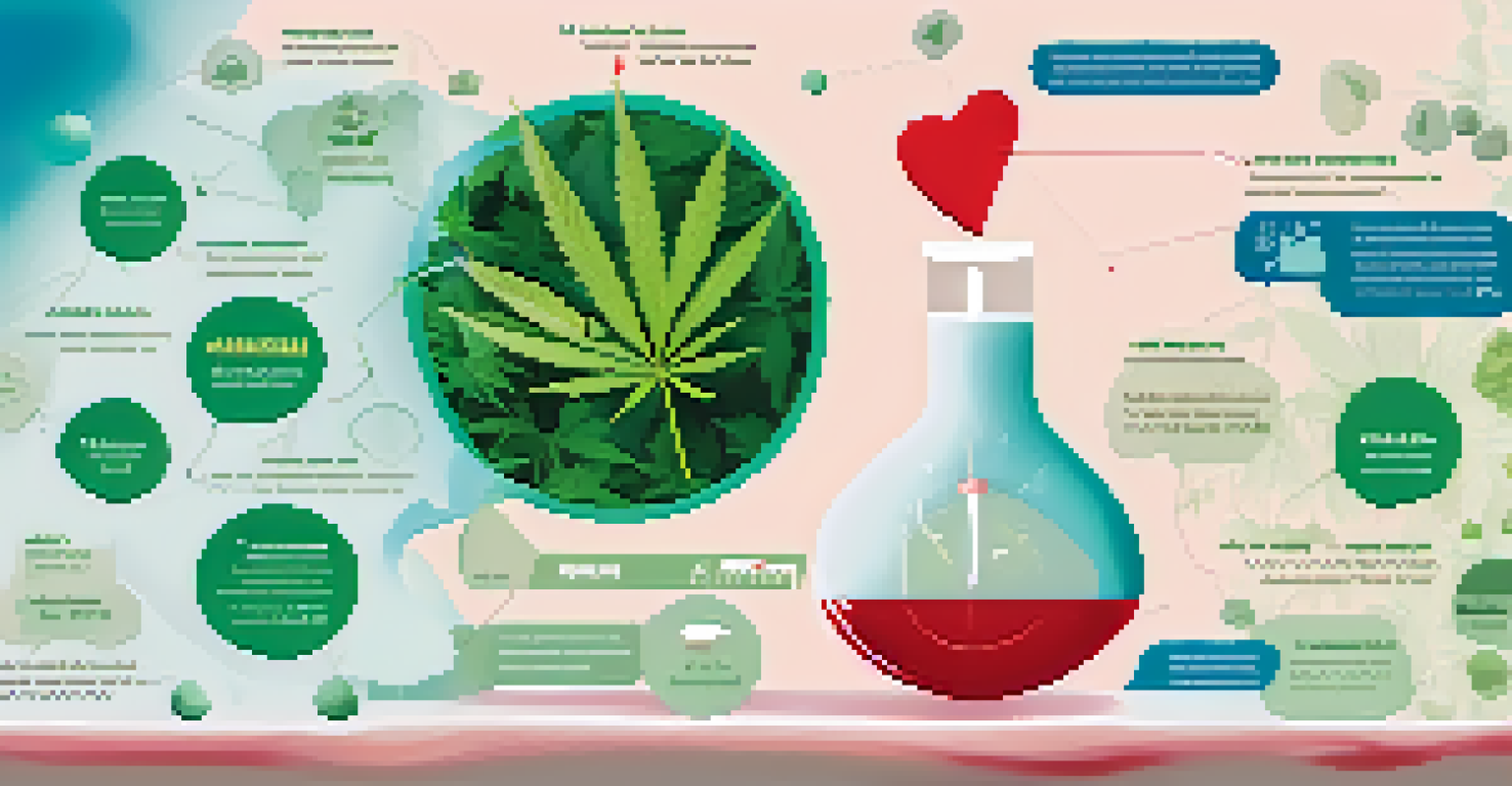Marijuana and Blood Thinners: A Dangerous Interaction?

Understanding Blood Thinners and Their Purpose
Blood thinners, or anticoagulants, are medications that help prevent blood clots. They are often prescribed to patients with certain heart conditions, those who have had surgeries, or individuals at risk for strokes. By thinning the blood, these medications reduce the likelihood of clots that could block blood flow and cause serious health issues.
The greatest medicine of all is to teach people how not to need it.
Common examples of blood thinners include warfarin and rivaroxaban. These medications work by interfering with the blood's clotting process, which is vital for healing but can also pose risks if clots form inappropriately. Understanding how these medications work is crucial for any patient prescribed them, especially if considering other substances like marijuana.
The effectiveness and safety of blood thinners depend on maintaining the right balance in the body. Any substance that affects blood coagulation can alter this delicate balance, making it essential to understand interactions with other drugs, including marijuana.
The Rise of Marijuana Use in Medicine
In recent years, marijuana has gained acceptance as a medicinal option for various health conditions. Patients report relief from chronic pain, anxiety, and nausea, leading to increased medicinal use. As more states legalize marijuana, understanding its interactions with other medications becomes paramount.

Cannabinoids, the active compounds in marijuana, can influence how the body metabolizes certain drugs. This means that, for individuals on blood thinners, marijuana could potentially enhance or diminish the effects of their medication. As a result, patients must approach this combination with caution.
Caution with Marijuana and Anticoagulants
Marijuana can interact with blood thinners, potentially increasing bleeding risks or reducing medication efficacy.
Despite marijuana's therapeutic benefits, it's essential to consider that its interaction with blood thinners is not fully understood. Ongoing research is required to determine how these substances work together and the potential risks involved.
Potential Interactions Between Marijuana and Blood Thinners
Marijuana can impact the liver enzymes that metabolize many medications, including blood thinners. This interaction may lead to either increased effects or reduced efficacy of anticoagulants, which can be dangerous. For instance, an increased effect could lead to excessive bleeding, while a reduced effect might heighten the risk of clot formation.
Your body is a temple, but only if you treat it as one.
The specific impact of marijuana on blood thinners may vary depending on the strain and consumption method. For example, smoking marijuana may have different effects compared to edibles or oils. As each method processes differently within the body, understanding these nuances is vital for patients.
With limited research available, healthcare professionals often advise caution when combining marijuana with blood thinners. This precaution emphasizes the need for patients to communicate openly with their doctors about any marijuana use to ensure safe medication management.
The Role of Communication with Healthcare Providers
Open communication with healthcare providers is crucial for patients using both marijuana and blood thinners. It's essential for patients to disclose all medications and supplements they are taking, including marijuana, to their doctors. This transparency allows healthcare professionals to make informed decisions and tailor treatment plans that prioritize patient safety.
Patients should feel empowered to ask questions about potential interactions and express any concerns regarding their treatment regimen. A proactive approach can help mitigate risks and ensure that patients receive the care they need.
Importance of Communication
Open dialogue with healthcare providers about marijuana use is essential for safe and effective treatment management.
Healthcare providers can offer personalized advice based on a patient's individual health profile and the specific blood thinner they are using. This collaboration fosters a better understanding of how to manage medications safely and effectively.
Monitoring and Adjusting Treatment Plans
For patients using both marijuana and blood thinners, regular monitoring is essential. Healthcare providers may recommend more frequent blood tests to assess how well the blood thinner is working and to check for any potential risks. Adjustments to the dosage of blood thinners may be necessary based on these findings.
Monitoring helps ensure that patients do not experience adverse effects while using both substances. It allows for timely adjustments if a patient shows signs of bleeding or clotting issues, which can arise from the combined use.
Ultimately, a tailored treatment plan that considers all medications and lifestyle choices leads to better health outcomes. Patients should actively engage in this process to promote their well-being and safety.
Recognizing Signs of Complications
Patients using marijuana and blood thinners should be aware of potential signs of complications. Symptoms like unusual bruising, prolonged bleeding from cuts, or blood in urine or stool can indicate problems. Recognizing these signs early is crucial for preventing serious health issues.
If any unusual symptoms arise, patients should contact their healthcare provider immediately. Quick action can help address any complications before they escalate, ensuring patient safety.
Regular Monitoring is Key
Patients using both marijuana and blood thinners should undergo frequent monitoring to adjust treatments and prevent complications.
Education about the side effects of both marijuana and blood thinners can empower patients to take charge of their health. Being proactive about symptoms can lead to better health management and outcomes.
Conclusion: Prioritizing Patient Safety
In conclusion, the interaction between marijuana and blood thinners is complex and warrants careful consideration. While marijuana may offer therapeutic benefits, its potential to impact blood thinner efficacy makes it essential for patients to approach this combination with caution. Communication and regular monitoring are key to ensuring patient safety.
Ultimately, every patient's situation is unique, and individualized care is vital. By collaborating with healthcare providers, patients can navigate their treatment options effectively while minimizing risks.

As research continues to evolve, a deeper understanding of marijuana's interactions with medications will emerge. Until then, prioritizing open dialogue with healthcare providers will remain critical for those managing both marijuana use and blood thinner prescriptions.